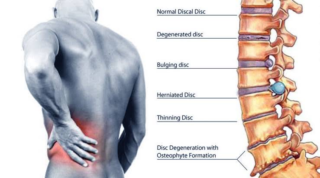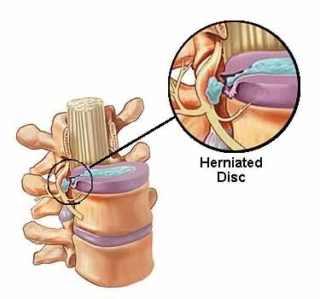CONDITIONS
Medical Conditions we treat:
- Musculoskeletal Conditions
Joints & Bones
Frozen Shoulder (Adhesive Capsulitis)
Bursitis
Dislocated Shoulder
Post Surgical Rehabilitation
Knee Pain
Osteoarthritis
Condramalacia Patella
Joint Stiffness
Neck & Spine
Neck Pain & Stiffness
Spondylitis
Low Back Pain
Sciatica
Degenerative Disc Disease(DDD)
Herniated Discs(Bulging Discs)/Slipped Disc
Spondylosis
Scoliosis
Piriformis Syndrome
Posture problems
Muscles
Spasm
Fibromyalgia
Rotator Cuff Injuries
De Quervain’s tenosynovitis
Trigger Finger
- Neurological conditions
- Sports injury conditions
Herniated Discs(Bulging Discs)/Slipped Disc
A herniated disc is a painful medical condition that occurs in your spine (backbone). Your spine is made up of 26 bones called vertebrae. In between each of these vertebrae are soft discs. These discs act like cushions and keep the bones of the spine in place. They also let your backbone move so you can bend and stretch.
These discs can weaken over time. Sometimes, they even rupture. The soft, jelly-like center of the disc pushes out of the disc. When this happens, it’s called a herniated disc. (The word “herniate” means to bulge or to stick out.) This is also called a ruptured disc, a slipped disc, or a bulging disc. These discs become a problem when the center of the disc pushes against a nerve or the spinal cord. This causes mild to severe pain.

Herniated discs are most common in the lumbar spine — the lower part of your backbone, between the bottom of your ribs and your hips. They can also happen in your cervical area (your neck). The discs in your upper-to-mid back (thoracic area) are rarely involved.
Causes
As you age, the discs in your spine weaken and become flatter (less cushiony). If a disc becomes too weak, the outer part may tear. The inside part of the disc then pushes through the tear and presses on the nerves beside it. You could be at higher risk of getting a herniated disc if you:
- Are middle-aged or older.
- Lift heavy objects.
- Are Overweight.
- Do repetitive actions involving bending or twisting.
- Sit in the same position for a long time regularly.
- Are in Inactive lifestyle.
- Smoke

Symptoms
When part of a disc presses on a nerve, it can cause pain. Often the pain occurs on one side of your body. Where the pain is located depends on where the herniated disc is located.
A slipped disc in the cervical section of your spine can cause pain in your neck and arms. You could experience:
- Pain when moving your neck.
- Pain near the shoulder blade.
- Shooting pain down the arm and into the fingers.
- Numbness in the shoulder, elbow, forearm, or fingers.
A slipped disc in the lumbar part of your spine can cause pain in the back and legs. It is often referred to as sciatica. This is because the disc pushes on the sciatic nerve, which runs down your leg. Symptoms include:
- Pain in the leg, hip, or buttocks.
- Numbness in these areas.
- Pain or numbness in the back of the calf or sole of the foot.
- Weakness in one leg.
How bad the symptoms are depends on how much of the disc is pressing on the nerve.
The pain from a herniated disc is usually worse when you’re active and gets better when you’re resting. Coughing, sneezing, sitting, driving, and bending forward may make the pain worse. The pain gets worse because these movements put more pressure on the nerve. People who have painful herniated discs often try to change positions to reduce the pain.
Diagnosis
Your doctor will ask you questions about your symptoms and give you an exam. He or she will check you for numbness, weakness, reflexes changes, and pain. They will probably order X-rays or other pictures to see whether you have a herniated disc. These could include a CT scan or an MRI. These will take pictures of your spine and show if you have a bulging disc. There are also nerve tests your doctor can order. These can determine what nerves are involved, if there is nerve damage, and how well your nerves are conducting feelings.

